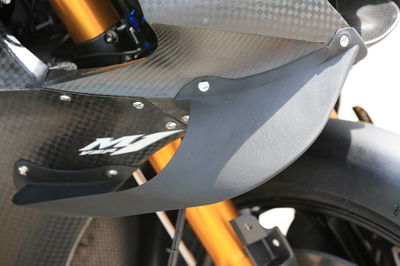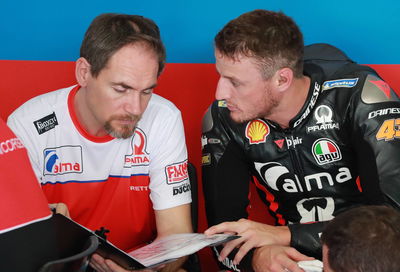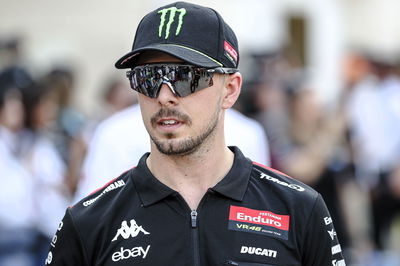MotoGP aero rules to tighten in 2019?
MotoGP Technical Director Danny Aldridge is currently drafting a tighter set of fairing regulations for the 2019 season.
If passed by the Grand Prix Commission, the amendments will provide more precise guidelines about what is and isn’t allowed for the new generation of 'integrated winglets'.
Due to safety concerns, normal external wings were banned at the end of 2016, to be replaced by a regulation that specified:

MotoGP Technical Director Danny Aldridge is currently drafting a tighter set of fairing regulations for the 2019 season.
If passed by the Grand Prix Commission, the amendments will provide more precise guidelines about what is and isn’t allowed for the new generation of 'integrated winglets'.
Due to safety concerns, normal external wings were banned at the end of 2016, to be replaced by a regulation that specified:
"Devices or shapes protruding from the fairing or bodywork and not integrated in the body streamlining (eg. wings, fins, bulges, etc.) that may provide an aerodynamic effect (eg. providing downforce, disrupting aerodynamic wake, etc.) are not allowed.
"The Technical Director will be the sole judge of whether a device or fairing design falls into the above definition."
Ever since, Aldridge has been at pains to point out that MotoGP doesn't want to 'ban downforce', only to make such wing devices safer (by being 'integrated') and control costs (by limiting the number of fairing modifications through a homologation procedure).
One problem is that teams have exploited another rule that states: "Material may be removed (eg. trimming, drilling of holes, etc.)... without affecting the homologation, but material may not be added."
This same rule, which allows for the drilling of holes to deal with crosswinds or additional cooling, opens the door for teams to construct their fairings in a 'modular' fashion.
In other words, the fairing can be used in several configurations: With or without the winglet systems fitted and, in the case of Ducati, as a half or full system.
That means 'one' design effectively becomes three different fairings, undoing the work to control aerodynamic costs.
The changes sought for 2019 will clamp down on such 'modular' designs and also provide some specific measurements regarding the overall dimensions of the winglet systems.
While most teams have converged towards the Ducati-style design of a rectangular 'duct' on either side of the fairing, Yamaha have gone a step further to create something more similar to the former wings, by morphing the duct concept into a kind of boomerang shape.
Among the current red lines for Aldridge are if the integrated wing systems extend in a forward direction, or if the outside horizonal surface is curved upwards (wing style). Only the external fairing shape is defined by the regulations.
The 2017 Valencia Test fairing from Yamaha looked to breach those guidelines, but was modified just enough for Sepang 2018. Until a clearer set of rules arrives, it appears the Yamaha design had to be passed as legal since the factory has cleverly mixed elements of other already-approved designs.
To address such tactics, the 2019 rules are likely to specify the dimensions of a 'box' area on either side of the fairings, within which integrated wing systems must be built, plus some radius figures.
It is thought that most of the designs passed since the start of last year would meet the tighter 2019 regulations, albeit without being used in the same 'modular' construction. The 2018 Yamaha fairing, however, might not fit within the post-2018 rules...












